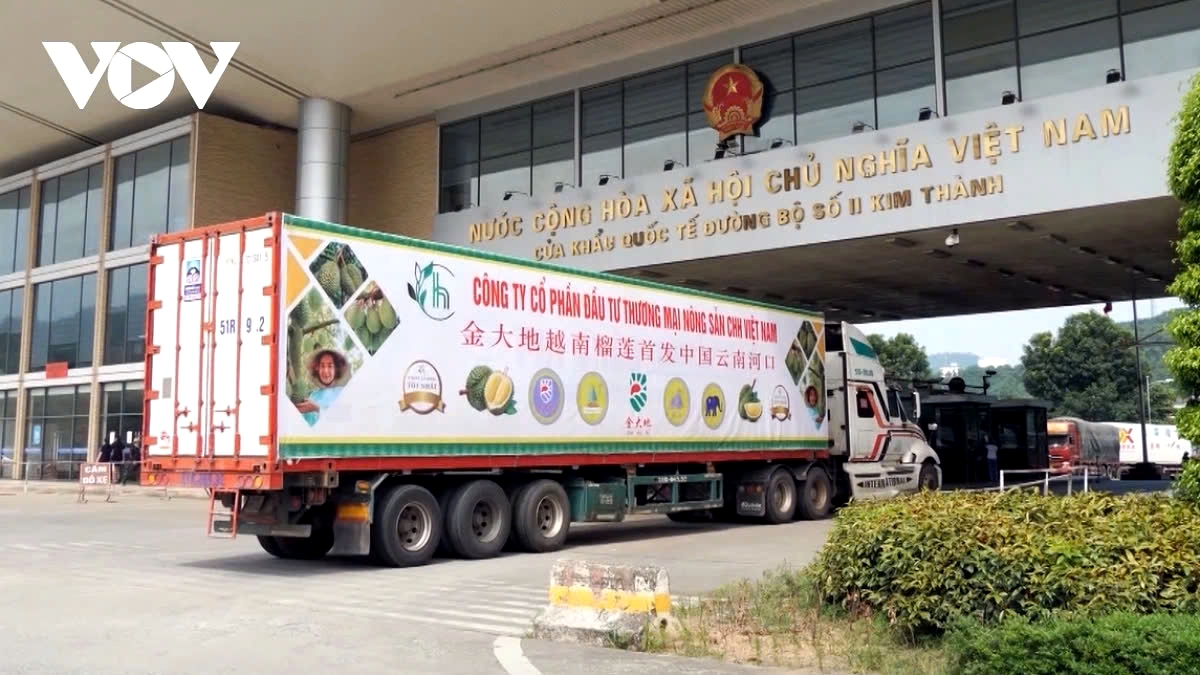Vietnam - China economic cooperation yields considerable gains
VOV.VN - Vietnam - China economic and trade cooperation has continuously reached new heights in recent years, according to comnews.cn, the website of China’s Ministry of Commerce.

Comnews.cn reports that China is Vietnam’s largest trading partner, while Vietnam is China’s largest trading partner in ASEAN.
It cites data from the General Administration of Customs of China, stating that two-way trade turnover between China and Vietnam hit US$260.65 billion last year, an increase of 13.5% compared to the previous year.
Of the total value, Chinese exports brought back US$161.89 billion, up 17.7%, while its imports reached US$98.76 billion, up 7.2%.
China’s main exports to Vietnam include electromechanical products, machinery, equipment, fabrics, yarn, and other materials and accessories. Meanwhile, China’s main imports from Vietnam are mineral resources and agricultural products.
China is the largest export market for Vietnamese agricultural products. An increasing number of high-quality agricultural products from Vietnam are entering the Chinese market and are well-received by Chinese consumers.
According to data from the General Department of Customs of Vietnam, in the first 11 months of 2024, Vietnam’s fruit and vegetable exports to China reached US$4.1 billion, while its seafood exports totaled US$1.4 billion, rising 28.7% and 23.2%, respectively.
Vietnamese durian is among the most favoured fruits for Chinese consumers. Since Vietnam was allowed to export durian to China in late 2022, fresh durian exports to this market have grown significantly. Statistics show China imported 692,500 tonnes of fresh durian from Vietnam worth approximately US$2.7 billion in the first 10 months of 2024.
Comnews.cn also highlights that Vietnam is an important foreign investment destination for China. From January to August 2024 alone, Chinese companies invested US$1.97 billion in Vietnam, maintaining a fast growth rate.
On the other hand, China’s direct investment in Vietnam in 2023 reached US$4.47 billion, raising its cumulative direct investment in the Southeast Asian economy to US$27.818 billion by the end of that year.
In recent years, the Hanoi Metro Line 2, constructed by Chinese companies, has provided convenient transportation for local residents. Chinese firms have also invested in several solar and wind power projects, serving as models for green economic cooperation between the two countries.
Notably, during the 16th meeting of the China-Vietnam Steering Committee on Bilateral Cooperation held in December 2024, the two sides signed an intergovernmental agreement on a cross-border standard-gauge railway cooperation project. Accordingly, the two countries will jointly build three standard-gauge railway lines - Lao Cai-Hanoi-Hai Phong, Lang Son-Hanoi, and Mong Cai-Ha Long-Hai Phong.
Chinese experts believe that, China and Vietnam possess unique advantages in economic development, with strong complementarities and vast cooperation potential, offering promising prospects.
Yuan Ba, director of the Asian Studies Institute under the Chinese Ministry of Commerce Research Academy, states that within the frameworks of the China-ASEAN Free Trade Area and the Regional Comprehensive Economic Partnership (RCEP), both China and Vietnam adhere to the concept of open and free development, actively promoting high-quality free trade cooperation and creating favorable conditions for the rapid development of bilateral trade and investment.
In the future, with the establishment of the China-ASEAN Free Trade Area 3.0 and the upgrade of RCEP, Vietnam and China will further promote trade and investment liberalization and facilitation. The two countries are expected to reach new consensus in emerging fields such as the digital economy, green economy, and supply chain connectivity. The level of ‘soft connectivity’ between the two countries that covers goods, resources, markets, rules, and standards will be further enhanced.
At the same time, with the rapid progress of cross-border standard-gauge railway projects, as well as the development of Vietnam-China cross-border economic cooperation zones, smart border checkpoints, and smart customs, ‘hard connectivity’ in infrastructure will enter a new development stage. China and Vietnam aim to enhance connectivity at a higher level, creating more development opportunities for economic and trade cooperation.
In addition, both sides have significant potential for development in the digital economy and green economy. Vietnam’s digital economy is expanding rapidly among Southeast Asian countries.
According to relevant reports, Vietnam’s digital economy maintained double-digit growth in 2024, with a compound annual growth rate of 16% and a total goods value of US$36 billion. This growth has been mainly driven by e-commerce and online tourism.
Yuan emphasizes that in the future, Vietnam and China could strengthen policy coordination, innovate cooperation models, and promote deeper integration of cross-border e-commerce with traditional domestic industries. The two sides could enhance cooperation in digital transformation, online tourism, smart cities, artificial intelligence, and other areas to further unlock the potential of the digital economy.
At the same time, Vietnam places great emphasis on developing the green economy and has formulated a national green growth strategy. With the inclusion of green economy-related rules and cooperation items in the China-ASEAN Free Trade Area 3.0, China and Vietnam have vast cooperation space and prospects in clean energy, new energy vehicles, environmental management, green transition, and green finance.


